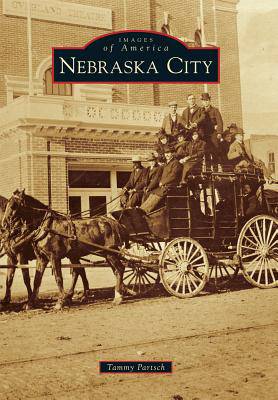
- Afhalen na 1 uur in een winkel met voorraad
- Gratis thuislevering in België vanaf € 30
- Ruim aanbod met 7 miljoen producten
- Afhalen na 1 uur in een winkel met voorraad
- Gratis thuislevering in België vanaf € 30
- Ruim aanbod met 7 miljoen producten
Zoeken
Omschrijving
When Lewis and Clark pulled their way up the Missouri River in the summer of 1804, their journals reported an area of boundless prairie and beautiful streams on the river's west bank. Fifty years later, the community of Nebraska City was born on that very spot. For many decades, the community served as a jumping-off point for travelers bound farther westward as thousands of wagon trains departed every year. By the late 1800s, the city became known for another reason: the home of Arbor Day. First introduced by Nebraska City resident J. Sterling Morton in 1872, Arbor Day became Nebraska's holiday and is now celebrated worldwide. The 1900s saw a decline in the transportation industry but a rise in manufacturing and the growing and canning of produce. Today, historical tourism makes up the economic lifeblood of this small but thriving community.
Specificaties
Betrokkenen
- Auteur(s):
- Uitgeverij:
Inhoud
- Aantal bladzijden:
- 128
- Taal:
- Engels
- Reeks:
Eigenschappen
- Productcode (EAN):
- 9781467114493
- Verschijningsdatum:
- 13/07/2015
- Uitvoering:
- Paperback
- Formaat:
- Trade paperback (VS)
- Afmetingen:
- 158 mm x 236 mm
- Gewicht:
- 312 g

Alleen bij Standaard Boekhandel
+ 69 punten op je klantenkaart van Standaard Boekhandel
Beoordelingen
We publiceren alleen reviews die voldoen aan de voorwaarden voor reviews. Bekijk onze voorwaarden voor reviews.








